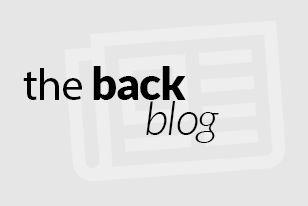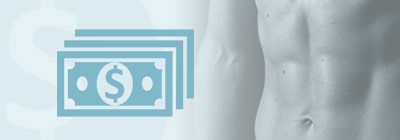Cellulite – All women know what this is, right? Yet there is great disagreement and some controversy in the medical community as to what it is and whether or not it is actually a real thing, a real diagnosis! The WebMD website says that “its name makes it sound like a medical condition”! Well, this “non-medical” condition seriously affects and deeply troubles some 80- 90% of adult women! Hundreds of millions of dollars are spent each year trying to treat it. If all that doesn’t qualify cellulite as a true condition worthy of respect and attention by our physicians then something’s very wrong! Even so, there are many scary sounding “medical condition” names which have been applied to what we commonly call cellulite including adiposis edematosa, dermopanniculosis deformans, status protrusus cutis, and gynoid lipodystrophy. Common nicknames for cellulite include orange peel syndrome, cottage cheese skin, quilted mattress skin, and seat cushion skin.
Multiple “causes” have been implicated (including genetic) but we still don’t really know for sure. Cellulite is rarely seen in men – is it a hormonally linked condition? Why does cellulite predominantly affect the abdomen, buttocks and thighs – why these areas? No one knows but it does suggest a hormonal mediated mechanism; reminiscent of stretch marks (striae atrophica) and their common areas of distribution – remarkably similar! Cellulite also seems to appear during hormonally active periods in women’s lives – adolescence, pregnancy, and menopause.
Most of us, doctors and patients alike, would recognize cellulite to be a dimpled, puckered, irregular appearing skin surface affecting large areas. Dimples may be cute on the face, but not on your thighs! The thighs, especially the outer thighs, seem to be the most commonly affected areas. At the microscopic level we know that something is happening to the architecture of the skin causing it to appear uneven, puckered and so unappealingly unsmooth. There seems to be a pseudoherniation (a bulging out without a true bulging through) of the superficial subcutaneous fat poking nearly through the tight fibrous connective tissue bands (which are supposed to act as retaining walls for the fat) underneath the skin. We see the sum total of all these bulges as an overall lumpy, bumpy look to the surface of the skin. It is very reminiscent of the way pillow material bulges in between the buttons of a seat cushion!
Doctors studying this dimpling phenomenon also recognized that depending on its severity, body position could also affect the appearance of cellulite. In 1978, the Nurnburger-Muller Scale was published:
The Nurnburger-Muller Scale(1978) for Cellulite Classification:
0 – no visible dimpling
1 – dimpling visible on pinch/squeeze only
2 – dimpling visible on standing only (not when lying down)
3 – dimpling always present/visible (whether standing or lying down)
There are a multitude of “options ” available for treating cellulite today. A recent Google search on “treatments for cellulite” revealed 1.4 million hits! But do any of them really work? Dr. Molly Wanner (noted Harvard dermatologist) said “there is no treatment for cellulite”. Noted dermatologist Michael McGuire of UCLA concurred (NY Times article, 2009).
Weight loss and strength training should help, but are not always the answer! Cellulite is not always associated with being overweight or out of shape. Skinny or overweight – you can still have cellulite. Many slender women in great shape are plagued with cellulite.
Nutritional changes and dietary supplements reportedly of assistance in the fight against cellulite include the use of gingko biloba, sweet clover, grape seed bioflavonoids, bladderwrack extract, oil of evening primrose, fish oil, omega 3’s & 6’s, soy lecithin, green tea, milk thistle, and niacin. Goals of these: boost metabolism, increase circulation, increase cellular nutrition, and increase fat metabolism/breakdown. So called anti-cellulite diets are designed to decrease inflammation, increase circulation, and increase fat metabolism. It is very tough to prove or disprove any of these claims or to determine if any of these intended effects are actually happening.
Anti-cellulite creams typically contain forms of methylxanthines (theophylline, aminophylline, caffeine) known to decrease blood vessel flow, decrease tissue fluids and to increase fat metabolism – but do they even get through the skin? Do the concentrations reach a level where they can be effective? Are they around long enough to effect any real changes? The evidence is very inconclusive for these creams and their effectiveness. Decreasing tissue fluids does have the effect of temporarily reducing the appearance of cellulite. As you will see throughout this article, any technique temporarily decreasing tissue fluids will temporarily “work”!
Retin-A/retinols show some benefit via the overall improvements in skin quality that come with the better skin tone and smoothness they can effectuate. There is some evidence that incorporating Retin-A with some of the methylxanthine-containing creams might create a synergistic effect better than either one alone for reducing the appearance of cellulite.
Tanning does help minimize the appearance of cellulite. But tanning rays from the sun or from a salon booth work via a UV radiation damage to the skin! This carries more real disadvantages (skin aging, skin looks even worse long term, skin cancer risks) than any potential benefits. Artificial or spray-type tanning techniques are a much safer alternative!
Herbal, seaweed and other types of body “wraps” work by decreasing tissue fluids (i.e., they do work, but it is only temporary).
Deep tissue massage will theoretically increase local blood flow, eliminate toxins, and decrease the tissue fluids. The only one of these three which have proven (albeit temporary) effectiveness is the “decrease the fluid” claim! Massage as a part of any treatment method will result in at least temporary improvement in cellulite because it causes a temporary decrease in tissue fluids and a temporary “redistribution/shifting” of the subcutaneous fat as well.
The Endermology device uses a special roller vacuum/massage technique. This does help – but like many treatments – it is temporary. Short term, temporary treatments like Endermology seem effective because they decrease tissue fluids in the area, and/or effect a temporary fat “redistribution”. As you will continue to see, this strategy is the basis for many cellulite treatment options.
The Silhouette device is essentially similar to the Endermology technology, utilizing the massage principles of decreasing tissue fluids and shift/redistributing of fat for temporarily reducing the appearance of cellulite.
Mesotherapy is very controversial as to its efficacy or consistency for fat removal alone. A lot of needles and injections are involved. The injected chemical cocktails are intended to induce fat “melting” not really for the treatment of cellulite. And even more irregularities in skin surface texture can result from a mesotherapy treatment because the melting is not necessarily uniform or even – i.e. more cellulite! Other reported problems include infection, rashes, and allergic reactions.
Radiofrequency (RF) is an integral part of several of both the non-invasive and minimally invasive machines and techniques available today. RF works by creating heat. This heat can melt fat and “shrink wrap” loose skin to various degrees. It makes sense that this should have benefits for cellulite – or does it? The results are inconclusive thus far and RF has therefore not yet been approved or cleared by the FDA as anti-cellulite treatment.
Vanquish uses RF to heat and kill fat cells in way similar to HIFU( see below). The skin can get very warm/hot (like an intense sun tanning exposure). A series of 6 – 8 treatment sessions, each lasting about 45 minutes is needed. Total cost is about $3000 -$4000.
Pellevé uses RF and massage for the (as expected) “temporary improvement” of cellulite.
Infrared light/red light as a type of non-invasive low level laser therapy (LLLT) seems to actually work – but (as all the research has shown) it must be the right wavelength of light to work.
Diode laser based systems depend upon a series of treatments to be most effective, as most treatments do. However, diode lasers can be a key component of a non-invasive LLLT system and will have benefit if the proper wavelength is utilized.
Smooth Shapes uses a vacuum massage plus a 650nm light and a 915nm laser. The massage effects are temporary. The low level laser therapy (LLLT) has more of basis for long term effectiveness but there is no research supported/peer reviewed published data on these light or laser wavelengths.
The TriActive machine uses a form of LLLT plus vacuum massage.
Liposuction is a great option for recontouring the body via the removal of troublesome localized fat deposits, but it is a poor choice for treating cellulite itself. Liposuction is very unlikely to make any areas of cellulite any better and can actually make areas of overlying cellulite worse!
SmartLipo laser lipolysis (fat melting) technology is a minimally invasive (not non-invasive) procedure. Theory: laser melts the fat, tightens the skin, causing overall smoothing. In practice – pretty good for getting rid of stubborn fat, rarely helps the cellulite.
Cellulaze is from the same company (Cynosure) that manufactures the SmartLipo machines. Cellulaze is similarly promoted as a “minimally invasive” procedure – but these are surgical procedures! A thin laser cable is inserted under the skin through an incision to melt the subcutaneous fat and snip the fibrous bands tethering the skin. It works – sort of – but not great. All the risks of a surgical procedure- recovery/downtime issues, infection, scarring – must be considered.
Subcision is a very old method developed to try to “release” and correct bound down, depressed, tethered scars via the actual surgical cutting of the fibrous scar bands under the skin. This technique is sometimes recommended in one form or another to treat cellulite. As a matter of fact, Cellulaze depends substantially on this strategy. The effectiveness of the subcision technique for treating cellulite has never been clearly established.
Collagenases are actual connective tissue dissolving enzymes which are applied to or injected under the skin, intended to loosen the tight, fibrous bands as a way to potentially smooth out the bumpiness. There are many ongoing studies, but this is still completely experimental.
HIFU stands for High Intensity Focused Ultrasound. This is a non-invasive, non-surgical way of targeting fat deposits for melting. The focused ultrasound generates intense heat under the skin, killing and melting the fat cells as a possible alternative to liposuction – but it really hurts! CoolSculpt uses fat freezing technology instead of heat to kill fat cells. Neither technology has been shown to have any positive effect on cellulite. For all we know, the effects of ultrasound or freezing on cellulite could be similar to that often seen for liposuction – not good!
The Verjú Green Laser is a completely non-invasive, non-painful, elegant technology that actually works! Please see our article, “The Verjú Green Laser: Non-Invasive Fat and Cellulite Reduction” to learn more about this exciting, new anti-cellulite technology!
Dr. Lyle Back is originally from New York City, receiving his medical and surgical training at Rutgers Medical School, Cooper Hospital – University Medical Center, and Ohio State. He is Board Certified in General Surgery (ABS) and Plastic Surgery (ABPS). He is a Fellow of the American College of Surgeons (ACS), the American Academy of Cosmetic Surgery (AACS), and a longstanding member of the premier American Society of Plastic Surgeons (ASPS). He served as a Professor of Plastic Surgery at Temple University and St. Christopher’s Hospital for Children and performed reconstructive surgery with “Operation Smile” in Vietnam. He specializes in the full range of the most modern and state of the art cosmetic surgery procedures for the body and non-surgical cosmetic enhancement techniques available today.



Great post.
Thanks Mildred!